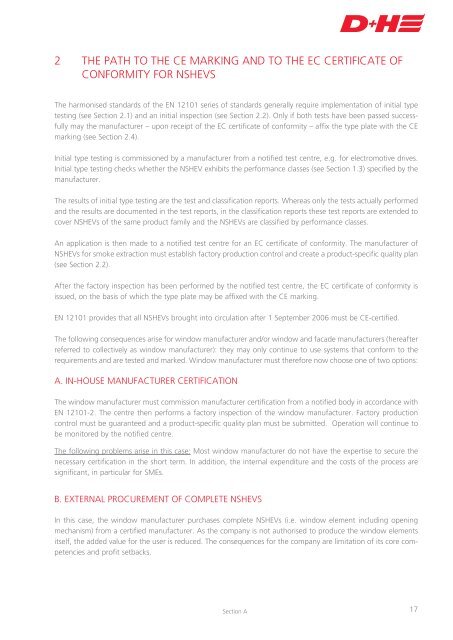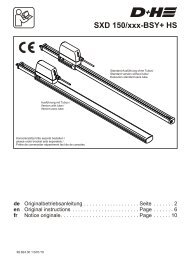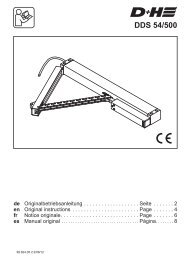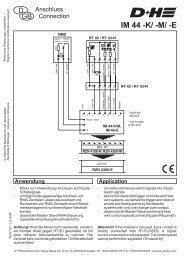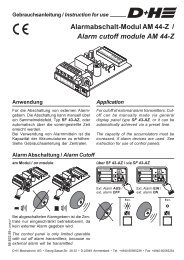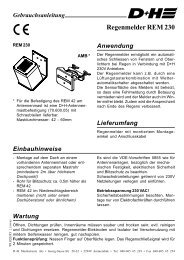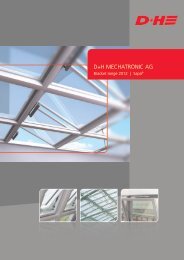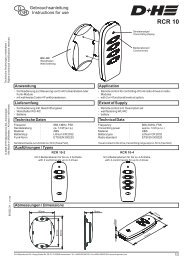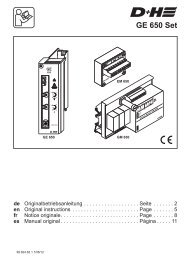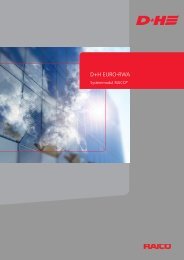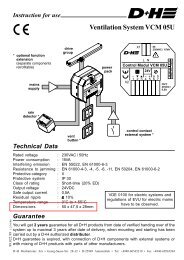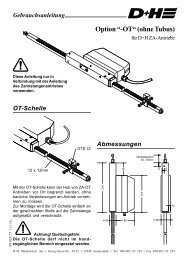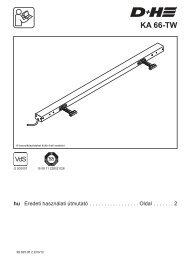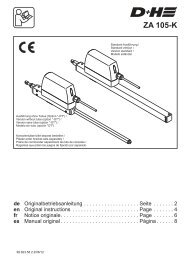Smoke ventilation according to EN 12101-2 - D+H Mechatronic
Smoke ventilation according to EN 12101-2 - D+H Mechatronic
Smoke ventilation according to EN 12101-2 - D+H Mechatronic
Create successful ePaper yourself
Turn your PDF publications into a flip-book with our unique Google optimized e-Paper software.
2 The path <strong>to</strong> the CE marking and <strong>to</strong> the EC certificate ofconformity for NSHEVsThe harmonised standards of the <strong>EN</strong> <strong>12101</strong> series of standards generally require implementation of initial typetesting (see Section 2.1) and an initial inspection (see Section 2.2). Only if both tests have been passed successfullymay the manufacturer – upon receipt of the EC certificate of conformity – affix the type plate with the CEmarking (see Section 2.4).Initial type testing is commissioned by a manufacturer from a notified test centre, e.g. for electromotive drives.Initial type testing checks whether the NSHEV exhibits the performance classes (see Section 1.3) specified by themanufacturer.The results of initial type testing are the test and classification reports. Whereas only the tests actually performedand the results are documented in the test reports, in the classification reports these test reports are extended <strong>to</strong>cover NSHEVs of the same product family and the NSHEVs are classified by performance classes.An application is then made <strong>to</strong> a notified test centre for an EC certificate of conformity. The manufacturer ofNSHEVs for smoke extraction must establish fac<strong>to</strong>ry production control and create a product-specific quality plan(see Section 2.2).After the fac<strong>to</strong>ry inspection has been performed by the notified test centre, the EC certificate of conformity isissued, on the basis of which the type plate may be affixed with the CE marking.<strong>EN</strong> <strong>12101</strong> provides that all NSHEVs brought in<strong>to</strong> circulation after 1 September 2006 must be CE-certified.The following consequences arise for window manufacturer and/or window and facade manufacturers (hereafterreferred <strong>to</strong> collectively as window manufacturer): they may only continue <strong>to</strong> use systems that conform <strong>to</strong> therequirements and are tested and marked. Window manufacturer must therefore now choose one of two options:a. In-house manufacturer certificationThe window manufacturer must commission manufacturer certification from a notified body in accordance with<strong>EN</strong> <strong>12101</strong>-2. The centre then performs a fac<strong>to</strong>ry inspection of the window manufacturer. Fac<strong>to</strong>ry productioncontrol must be guaranteed and a product-specific quality plan must be submitted. Operation will continue <strong>to</strong>be moni<strong>to</strong>red by the notified centre.The following problems arise in this case: Most window manufacturer do not have the expertise <strong>to</strong> secure thenecessary certification in the short term. In addition, the internal expenditure and the costs of the process aresignificant, in particular for SMEs.b. External procurement of complete NSHEVsIn this case, the window manufacturer purchases complete NSHEVs (i.e. window element including openingmechanism) from a certified manufacturer. As the company is not authorised <strong>to</strong> produce the window elementsitself, the added value for the user is reduced. The consequences for the company are limitation of its core competenciesand profit setbacks.Section A17


